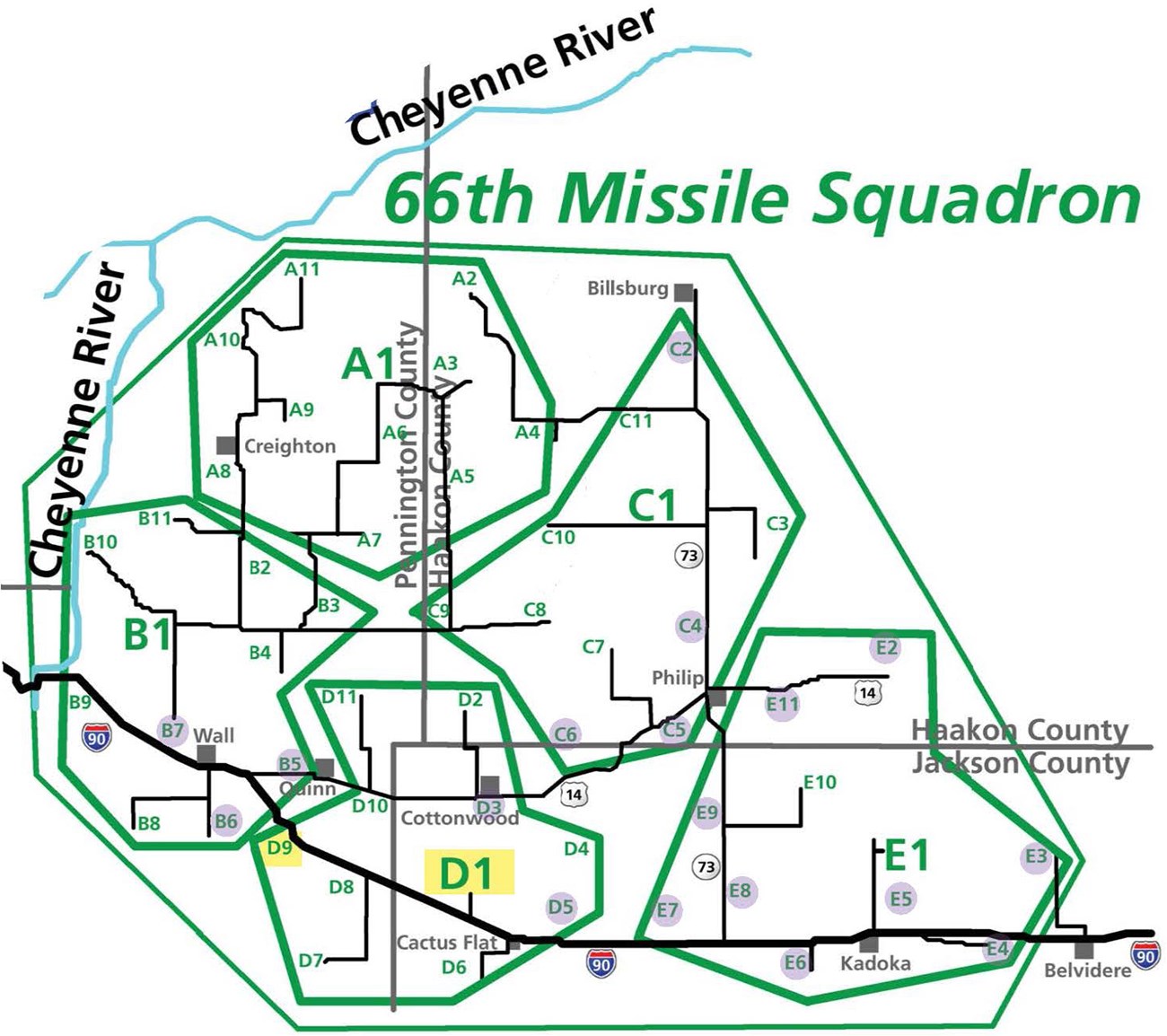Last updated: December 29, 2020
Thing to Do
Spot a (Former) Nuclear Missile Silo

"When the government came in to take this land for missiles, one of the quotes was 'when we are done using this land we will return it to the prairie.' And, of course they did not return it to the prairie. We’ve got these spots out there wherever they were as a constant reminder, a constant scar on our landscape."
- William Bielmaier, rancher
For a generation, the South Dakota landscape was dotted by 150 nuclear missile silos and 15 launch control facilities. Following the 1991 START treaty, these facilities along with others in Missouri and North Dakota were dismantled.
And yet, to an observant eye, remnants of the former missile field still remain on the landscape. In fact, in the area between Minuteman Missile National Historic Site and Badlands National Park, nearly half a dozen former silos can be identified.
This activity is a vehicle-based exploration of a portion of the South Dakota landscape. Most of the sites on this tour are privately owned and have no accessibility accomodations. Please respect private property and observe these sites from the road.
Plowshares to Swords to Plowshares
The Air Force positioned each missile flight (one control center and ten silos) in the same geographic area, but individual silos could not be directly adjacent to another silo or control center. Minimally, the Air Force required these sites to be geographically separated by an area large enough to withstand a ten-megaton explosion at an adjacent facility.
Prior to construction of the missile sites in South Dakota, right-of-entry, easements, and land purchase agreements needed to be made with hundreds of property owners. The system would require the land acquisition for 150 silos, fifteen control centers, and approximately 1,732 miles of communications cables connecting the facilities.
Such large-scale construction was not without its inconveniences. During the site-selection process, some landowners did not feel that the Air Force provided enough information to sign rights-of-entry to their property. To ensure that the government took landowners’ rights into consideration during site selection and fairly compensated landowners, a group of farmers and ranchers formed the Minuteman Missile Area Landowners Association in the early 1960s. The Association disseminated information to area landowners, believing that working collectively would aid the defense effort while safeguarding their private interests.
Most landowners understood that the national defense program required the installation of Minuteman missiles, and the technical reasons why the Air Force required use of their land. Prior to signing any agreements, however, association members wanted the government to address the disadvantages of having a silo constructed within their property. Many landowners were concerned that the location of the proposed sites would disrupt irrigation systems, take irreplaceable land, or interfere with agricultural operations. While their primary stated goal was to obtain a reasonable settlement for land and construction damages, the group also wanted to minimize the effects of the missile system upon nearby schools, roads, and the local police force.
Following the construction of the missile field, the Minuteman Missile Area Landowners Association remained inactive until the early 1990s when the Air Force began the deactivation process of the Minuteman II ICBMs and a new generation of property owners worked together to disseminate information and provide support.

Former Silo Locations in Central South Dakota
The Delta-09 silo and Delta-01 launch control facility are preserved as a part of Minuteman Missile National Historic Site and may be viewed in their historic state.
The remainder of these sites are privately owned. Please respect private property and observe these sites from the road.
Former missile sites visible from I-90 Eastbound:
Delta-01
Echo-06
Echo-05
Echo-04
Former missile sites visible from I-90 Westbound:
Echo-05
Echo-07
Delta-01
Delta-05
Delta-09
Bravo-07
Former missile sites visible from Hwy 73, Northbound:
Charlie-02
Charlie-04
Echo-08
Echo-09
Former missile sites visible from Hwy 14, Westbound:
Charlie-05
Charlie-06
Delta-03
Bravo-05
Echo-02
Echo-11
Former missile sites visible from Hwy 240:
Bravo-06
